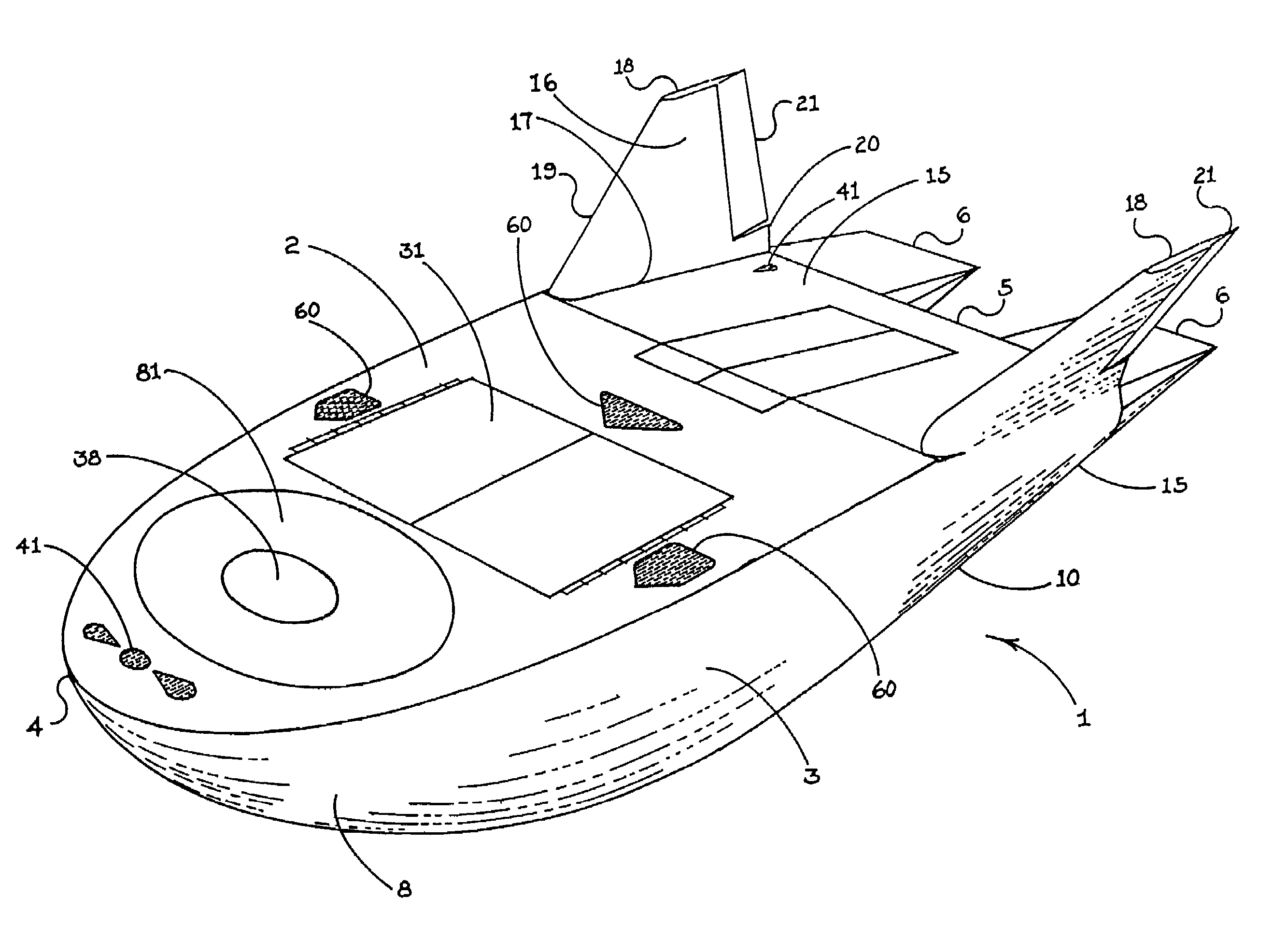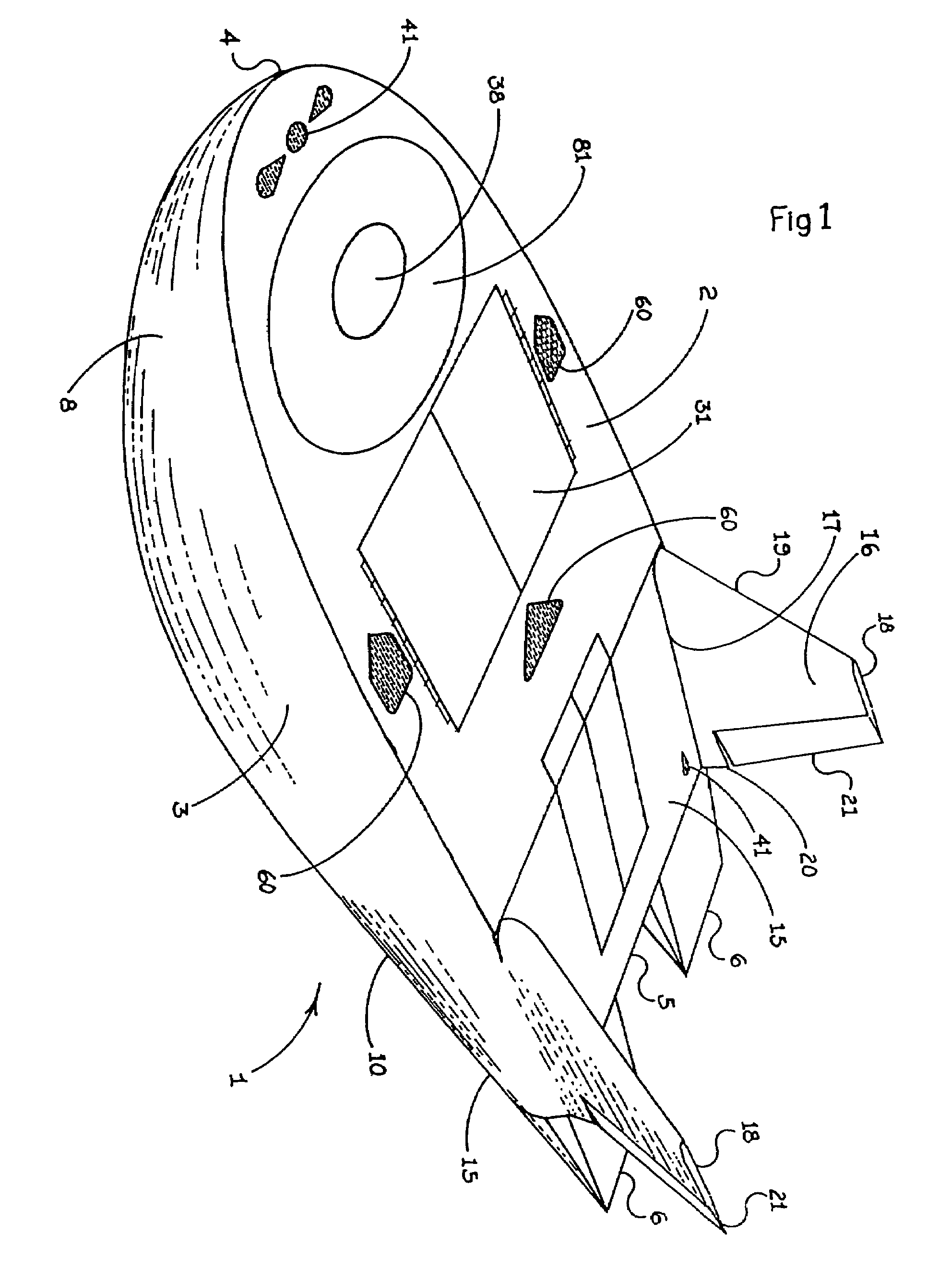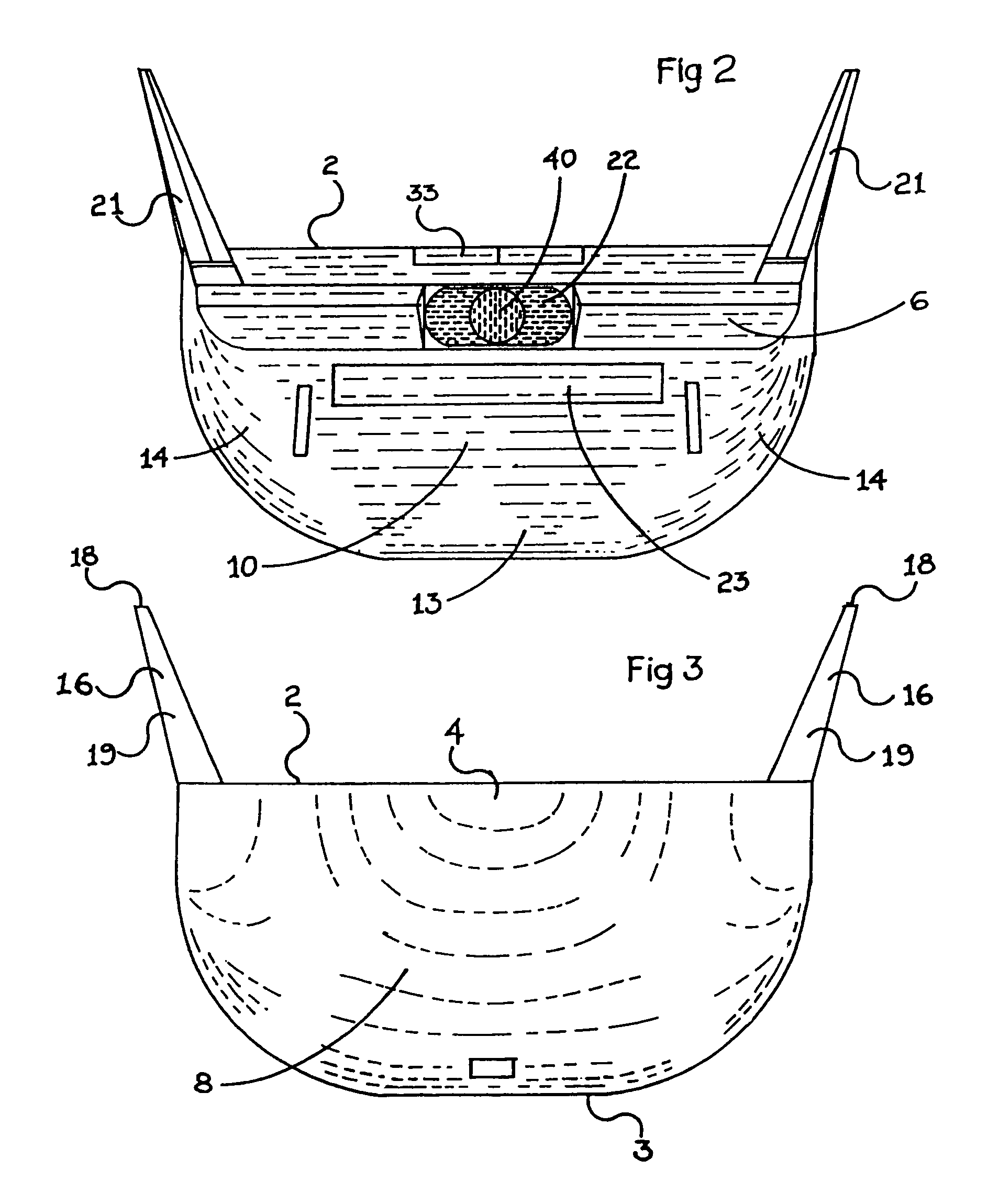Lifting body aircraft and reentry vehicle with chines
a lifting body and reentry vehicle technology, applied in the field of aircraft, can solve the problems of reducing the pressure above the upper surface affecting the overall upward force of the lifting body, and causing significant air to be displaced up and around the body of the vessel, etc., and achieves the effect of convenient installation, rapid adaptation, and efficient servi
- Summary
- Abstract
- Description
- Claims
- Application Information
AI Technical Summary
Benefits of technology
Problems solved by technology
Method used
Image
Examples
Embodiment Construction
[0056]The invention comprises a lifting body aircraft 1 having an upper surface 2 and a lower surface 3. Upper surface 2 extends from the nose 4 to the tail 5 of craft 1. The length of craft 1 is that dimension extending from nose 4 to tail 5, excluding any elevons 6 (discussed below) which may be provided at the tail end or aft end 7 of craft 1.
[0057]Lower surface 3 has a first half 8 extending from nose 4 to about the longitudinal center line 9 of craft 1. The longitudinal center line 9 of craft 1 is determined by a plane severing craft 1 perpendicular to the length of craft 1 at the half way point between nose 4 and tail 5. Lower surface 3 also has a second half 10 extending from about longitudinal center line 9 to tail 5.
[0058]Upper surface 2 has a pair of edges 11 that extend from nose 4 to tail 5 such that nose 4, edges 11, and tail 5 demark upper surface 2. Edges 11 also demark two boundaries between upper surface 2 and lower surface 3. Edges 11 preferably run from nose 4 to ...
PUM
 Login to View More
Login to View More Abstract
Description
Claims
Application Information
 Login to View More
Login to View More - R&D
- Intellectual Property
- Life Sciences
- Materials
- Tech Scout
- Unparalleled Data Quality
- Higher Quality Content
- 60% Fewer Hallucinations
Browse by: Latest US Patents, China's latest patents, Technical Efficacy Thesaurus, Application Domain, Technology Topic, Popular Technical Reports.
© 2025 PatSnap. All rights reserved.Legal|Privacy policy|Modern Slavery Act Transparency Statement|Sitemap|About US| Contact US: help@patsnap.com



